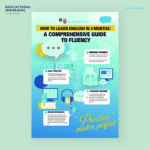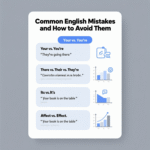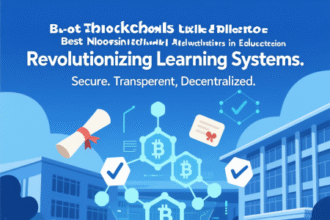The EdTech landscape in 2025 is poised for a seismic shift, driven by transformative technologies that are redefining how education is delivered, experienced, and scaled. From artificial intelligence to immersive learning environments, these advancements are not only enhancing accessibility but also personalizing education to meet diverse learner needs. We explore the five most impactful EdTech trends that will shape the future of learning, providing educators, institutions, and businesses with actionable insights to stay ahead in this dynamic sector. This comprehensive guide delves into the nuances of each trend, offering detailed strategies to leverage them for maximum impact.
- The Rise of AI-Powered Personalized Learning
- Immersive Learning with VR and AR Technologies
- Gamification: Engaging Learners Through Play
- Blockchain for Secure Academic Records
- Microlearning and Digital Badges for Flexible Education
- Strategies to Leverage EdTech Trends for SEO Success
- The Future of EdTech: Sustaining Growth in 2025
- Recommendations for EdTech Providers
- Frequently Asked Questions (FAQs)
The Rise of AI-Powered Personalized Learning
Artificial intelligence (AI) has emerged as a cornerstone of EdTech trends in 2025, fundamentally transforming how educational content is tailored to individual learners. AI-powered platforms analyze vast datasets—such as student performance metrics, learning styles, and engagement patterns—to create bespoke learning pathways. These systems adapt in real-time, ensuring that each student receives content at the right difficulty level, pace, and format. For instance, platforms like Squirrel AI and Microsoft’s Reading Coach use machine learning and natural language processing to identify a learner’s strengths and weaknesses, delivering customized exercises that enhance retention and understanding.
This personalization extends beyond academic content. AI tools now incorporate emotional intelligence, detecting cues like frustration or boredom through facial recognition or response patterns. By 2025, 60% of educators have integrated AI into their teaching, according to Forbes, with platforms like Amira Learning offering one-on-one support that mimics human tutoring. These tools reduce the administrative burden on teachers by automating tasks like grading and question generation, allowing them to focus on fostering critical thinking and creativity.
For EdTech companies, optimizing for AI-driven search engines is critical. Content must be structured with clear headings, bullet points, and concise answers to align with Google’s AI Overviews, which prioritize user-focused, intent-driven material. We recommend creating content that answers specific learner queries, such as “how to improve math skills with AI tools,” to capture featured snippets and boost visibility. Additionally, incorporating real-world case studies—such as how AI helped a rural school district improve literacy rates by 25%—enhances credibility and aligns with Google’s E-E-A-T (Experience, Expertise, Authoritativeness, Trustworthiness) guidelines.
Key Benefits of AI-Powered Learning
-
Adaptive Content Delivery: Adjusts difficulty and format based on real-time student performance.
-
Scalable Tutoring: Provides personalized support to thousands of learners simultaneously.
-
Data-Driven Insights: Offers educators analytics to track progress and identify gaps.
-
Engagement Boost: Increases student motivation through tailored, interactive experiences.
Immersive Learning with VR and AR Technologies
Immersive technologies, including virtual reality (VR) and augmented reality (AR), are revolutionizing EdTech by creating dynamic, hands-on learning environments. In 2025, these tools are no longer niche; they are mainstream, with the global game-based learning market projected to reach $97 billion by 2032. VR and AR enable students to explore historical events, conduct virtual science experiments, or collaborate globally in simulated settings. For example, platforms like ClassVR allow students to “visit” ancient Rome or dissect virtual organisms, making abstract concepts tangible.
These technologies enhance engagement by appealing to multiple senses, improving knowledge retention by up to 75% compared to traditional methods, according to studies from PRWeb. Universities are adopting VR for remote learning, transforming online lectures into interactive experiences where students can manipulate 3D models or participate in virtual labs. In corporate training, companies like Verizon use VR to simulate real-world scenarios, such as customer service interactions, boosting employee readiness and soft skills.
For EdTech providers, optimizing content for video and visual search is essential. Google’s expanded video indexing in 2025 prioritizes immersive content, so including descriptive alt text, closed captions, and keyword-rich video metadata is crucial. We advise creating short, engaging “how-to” videos showcasing VR/AR applications in education, targeting queries like “best VR tools for classroom learning.” Collaborating with influencers in the education sector to demonstrate these tools can also build high-quality backlinks, enhancing SEO performance.
Applications of VR and AR in Education
-
Historical Reenactments: Students experience events like the signing of the Magna Carta in a 360-degree environment.
-
STEM Simulations: Virtual labs allow safe, cost-effective experiments in physics or chemistry.
-
Global Collaboration: AR platforms connect students across continents for joint projects.
-
Skill Development: VR training for soft skills like public speaking or leadership.
Gamification: Engaging Learners Through Play
Gamification is reshaping EdTech by integrating game-like elements into learning platforms, driving engagement and motivation. In 2025, the educational games market is valued at $11.5 billion, with a projected annual growth rate of 40%. Tools like ClassDojo and Kahoot! use rewards, leaderboards, and competitive quizzes to make learning addictive. These platforms leverage psychological principles, such as dopamine release from earning points, to keep students invested in their progress.
Gamification is particularly effective in K-12 education, where short attention spans demand innovative engagement strategies. For instance, scavenger-hunt activities in apps like Duolingo make language learning feel like a game, increasing completion rates by 30%. In higher education, gamified simulations teach complex subjects like engineering or economics by allowing students to “play” through real-world scenarios, such as managing a virtual business.
To optimize for SEO, EdTech companies should create content around high-intent keywords like “gamified learning tools for students.” Structured content with FAQs, bullet points, and case studies—such as how gamification improved student attendance by 15% in a Chicago school district—can secure featured snippets. Engaging with online communities like Reddit’s r/EdTech, where educators share gamification success stories, can also drive organic traffic and build brand authority.
Why Gamification Works
-
Motivational Rewards: Points and badges incentivize consistent effort.
-
Interactive Challenges: Quizzes and puzzles maintain focus and reduce dropout rates.
-
Collaborative Learning: Multiplayer games foster teamwork and communication.
-
Data Tracking: Analytics provide insights into student progress and engagement.
Blockchain for Secure Academic Records
Blockchain technology is transforming how EdTech manages academic records, offering secure, transparent, and tamper-proof solutions for credentials like diplomas, transcripts, and test scores. In 2025, blockchain adoption in education is surging, driven by the need for verifiable records in an increasingly digital world. Platforms like Blockcerts enable institutions to issue digital credentials that students can share with employers or universities without intermediaries, reducing fraud and administrative costs.
Smart contracts, a blockchain feature, streamline processes like assignment deadlines and student loan management. For example, a smart contract could automatically release funds to a student upon course completion, incentivizing timely progress. By 2025, institutions using blockchain report a 20% reduction in administrative overhead, according to technews180.com. This technology also empowers learners by giving them control over their data, aligning with privacy laws like GDPR and COPPA.
For SEO, EdTech companies should target long-tail keywords like “blockchain for secure academic records” and create comprehensive guides with schema markup for FAQs and reviews. Collaborating with educational influencers to discuss blockchain’s benefits can generate high-value backlinks. Additionally, optimizing for zero-click searches with concise, structured answers ensures visibility in Google’s Knowledge Panels.
Blockchain Benefits in EdTech
-
Data Security: Immutable ledgers protect against tampering and fraud.
-
Cost Efficiency: Reduces reliance on paper-based or manual verification processes.
-
Student Empowerment: Learners control and share their credentials seamlessly.
-
Scalability: Supports global adoption across institutions and employers.
Microlearning and Digital Badges for Flexible Education
Microlearning, the delivery of bite-sized educational content, is a dominant EdTech trend in 2025, catering to shrinking attention spans and busy schedules. These short, focused modules—typically 5-10 minutes long—enhance retention by breaking complex topics into manageable segments. Platforms like Coursera and LinkedIn Learning offer micro-courses on topics from coding to leadership, allowing learners to progress at their own pace. Studies show microlearning improves completion rates by 60% compared to traditional courses.
Digital badges, another key trend, provide flexible, verifiable credentials that recognize specific skills. Unlike traditional degrees, badges allow learners to showcase niche competencies, such as “Python for Data Analysis” or “Cybersecurity Fundamentals.” In 2025, 85% of Fortune 500 companies integrate micro-credentials into their training programs, according to Skill Scouter. These badges are shareable on platforms like LinkedIn, enhancing employability and visibility.
For SEO, EdTech providers should create content targeting queries like “best microlearning platforms for professionals.” Including testimonials, such as how a micro-course helped a mid-career professional land a promotion, adds authenticity. Optimizing for video search with tutorials on microlearning benefits can also capture YouTube’s growing share of educational queries, as Google increasingly prioritizes video results in 2025.
Advantages of Microlearning and Badges
-
Flexible Learning: Fits into busy schedules with short, on-demand modules.
-
Skill-Specific Recognition: Badges validate targeted competencies for employers.
-
High Engagement: Bite-sized content reduces cognitive overload and boosts retention.
-
Career Advancement: Aligns with workforce demands for continuous upskilling.
Strategies to Leverage EdTech Trends for SEO Success
To dominate search rankings in 2025, EdTech companies must align their content strategies with these trends while adhering to SEO best practices. Google’s AI Overviews and zero-click searches demand concise, structured content that answers user queries directly. For example, creating FAQ sections targeting long-tail keywords like “how does AI personalize learning” can secure featured snippets. Additionally, optimizing for mobile-first indexing is non-negotiable, as 70% of educational searches occur on mobile devices.
Engaging with online communities, such as Reddit and Quora, is critical for building brand authority. For instance, participating in discussions on r/EdTech about VR in classrooms can drive traffic and earn high-quality backlinks. Video content, such as demos of gamified learning apps, should be optimized with descriptive titles, tags, and transcripts to rank on YouTube and Google. Finally, regularly auditing content for E-E-A-T compliance—by including author bios, citations, and fresh data—ensures alignment with Google’s algorithm updates.
SEO Optimization Checklist
-
Keyword Research: Use tools like Ahrefs to identify high-intent, long-tail keywords.
-
Content Structure: Include headings, bullet points, and schema markup for snippets.
-
Backlink Building: Collaborate with influencers and educational blogs for quality links.
-
Mobile Optimization: Ensure fast load times and responsive design for mobile users.
-
Analytics Tracking: Monitor organic traffic and engagement with Google Analytics.
The Future of EdTech: Sustaining Growth in 2025
The EdTech sector is projected to reach $598.82 billion by 2032, driven by these transformative trends. However, success requires balancing innovation with ethical considerations, such as AI bias and data privacy. Institutions must adopt transparent data policies and comply with regulations like FERPA to build trust. Additionally, focusing on sustainability—through energy-efficient platforms and digital textbooks—aligns with global demands for eco-friendly education.
Cross-sector partnerships are another growth driver. For example, collaborations between EdTech companies and corporations like Google, which offers free AI tools to students, are expanding access to cutting-edge resources. International markets also present opportunities, but success hinges on adapting content to local educational contexts. By staying agile and user-focused, EdTech providers can lead the charge in reshaping global education.
Emerging Opportunities
-
Upskilling Platforms: Tools like Degreed address workforce needs for continuous learning.
-
Global Expansion: Tailor platforms for cultural and linguistic diversity in new markets.
-
Sustainable Practices: Develop digital tools to reduce education’s carbon footprint.
-
Collaborative Learning: Social platforms foster peer-to-peer engagement and community.
Recommendations for EdTech Providers
To capitalize on these EdTech trends, we recommend the following strategies:
-
Invest in AI Tools: Develop or integrate platforms that personalize learning and automate administrative tasks.
-
Embrace Immersive Tech: Create VR/AR content that enhances engagement and accessibility.
-
Incorporate Gamification: Design platforms with rewards and challenges to boost motivation.
-
Adopt Blockchain: Implement secure systems for credential management and data privacy.
-
Promote Microlearning: Offer bite-sized courses and digital badges to meet modern learner needs.
-
Optimize for SEO: Focus on user intent, mobile responsiveness, and community engagement to rank higher.
-
Monitor Analytics: Use KPIs like organic traffic and engagement to refine strategies continuously.
Frequently Asked Questions (FAQs)
-
What are the top EdTech trends for 2025?
The top EdTech trends include AI-powered personalized learning, immersive VR/AR technologies, gamification, blockchain for secure records, and microlearning with digital badges. -
How does AI improve education in 2025?
AI personalizes learning by adapting content to individual needs, automates administrative tasks, and provides data-driven insights to enhance teaching effectiveness. -
Why is VR important in EdTech?
VR creates immersive learning experiences, such as virtual labs and historical reenactments, improving engagement and retention by up to 75%. -
What role does gamification play in learning?
Gamification uses rewards, leaderboards, and challenges to increase student motivation and engagement, reducing dropout rates significantly. -
How does blockchain benefit EdTech?
Blockchain ensures secure, tamper-proof academic records, reduces administrative costs, and empowers students to control their credentials. -
What is microlearning in EdTech?
Microlearning delivers bite-sized content in short modules, improving retention and fitting into busy schedules for flexible learning. -
How can EdTech companies optimize for SEO?
Use long-tail keywords, structured content, mobile optimization, and community engagement to rank higher in search results. -
Why is mobile optimization crucial for EdTech?
With 70% of educational searches on mobile devices, responsive design and fast load times are essential for user experience and rankings. -
How does gamification improve student retention?
Gamified elements like points and badges motivate students, increasing completion rates by up to 30%, as seen in platforms like Duolingo. -
What are digital badges in education?
Digital badges are verifiable credentials that recognize specific skills, shareable on platforms like LinkedIn to enhance employability. -
How can VR/AR be integrated into classrooms?
VR/AR can be used for virtual field trips, simulations, and collaborative projects, making learning interactive and accessible. -
What are the privacy concerns in EdTech?
Data privacy, especially with AI and blockchain, requires compliance with laws like GDPR and FERPA to protect student information. -
How does microlearning benefit professionals?
Microlearning offers flexible, skill-specific courses that align with career goals, improving employability and productivity. -
Why is community engagement important for EdTech SEO?
Engaging in forums like Reddit builds authority, drives traffic, and earns backlinks, boosting search visibility. -
What is the future of EdTech in 2025?
The future involves AI-driven personalization, immersive tech, sustainable practices, and global expansion to meet diverse learner needs.




















